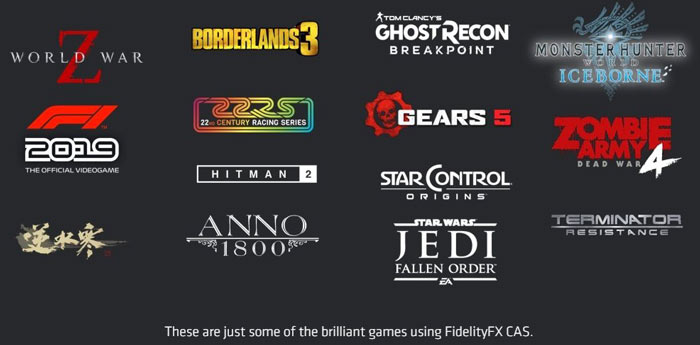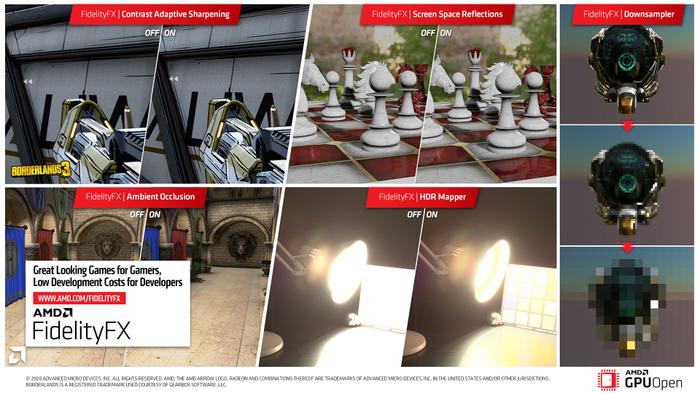AMD has relaunched its GPUOpen initiative with a refreshed website for developers - plus four new GPUOpen tools. About four years ago the GPUOpen initiative was kick-started. Since that time a lot has changed in the graphics world, not just hardware-wise, big developments have been implemented in software and with APIs like DirectX 12 and Vulkan, which are now widely supported. GPUOpen has provided ISA and programming guides for a variety of Radeon GPU architectures released over the last four years, the Radeon GPU Profiler, Radeon GPU Analyzer, as well as over 50 tutorials to foster innovation and improve graphics performance.
In 2019 GPUOpen released the first AMD FidelityFX feature, Contrast Adaptive Sharpening (CAS) (see screenshot comparison above). This effect, which enables better visual sharpness with minimal artefacts, and restores detail lost after Temporal Anti-Aliasing (TAA), is now available in over 15 games.

With the relaunch of GPUOpen, FidelityFX will get four new tools; Stochastic Screen Space Reflections (SSSR), Combined Adaptive Compute Ambient Occlusion (CACAO), Luminance Preserving Mapper (LPM), and Single Pass Downsampler (SPD). These are summarised in the bullet points below:
- FidelityFX Screen Space Reflections: Our implementation of Stochastic Screen Space Reflections (SSSR) delivers high-quality reflections with minimal overhead, via an optimized compute shader and RDNA architecture-optimized denoising.
- FidelityFX Ambient Occlusion: Our RDNA architecture-optimized Combined Adaptive Compute Ambient Occlusion (CACAO) effect dynamically and efficiently helps improve the appearance of objects based their exposure to ambient light.
- FidelityFX HDR Mapper: Optimized for use with AMD FreeSync Premium Pro displays, AMD’s Luminance Preserving Mapper (LPM) delivers superior HDR and wide color gamut content for games.
- FidelityFX Downsampler: Single-pass and optimized for RDNA architecture, AMD’s compute shader-based Single Pass Downsampler (SPD) generates texture MIP levels using asynchronous compute for optimal performance.
Click the image above for a visual guide to the difference each tool can make to a scene.
In addition to those four new tools, GPUOpen has announced that its next-level physics tool, FEMFX, is available as source code and as a plug-in for Unreal Engine. It says that FEMFX enables developers to add a whole new level of physics realism to their games. It works well alongside another open-sourced tool, TressFX, for GPU-accelerated realistic hair and fur rendering and simulation - which reached v4.1 in January.
GPUOpen has made available a couple of demos for developers and gamers to check how FEMFX can make a difference. Grab them via the AMD blog links about 3/4 of the way down the post.
Lastly, GPUOpen has just committed to keeping its Twitter channel up to date with news of regular updates and developer topics.















